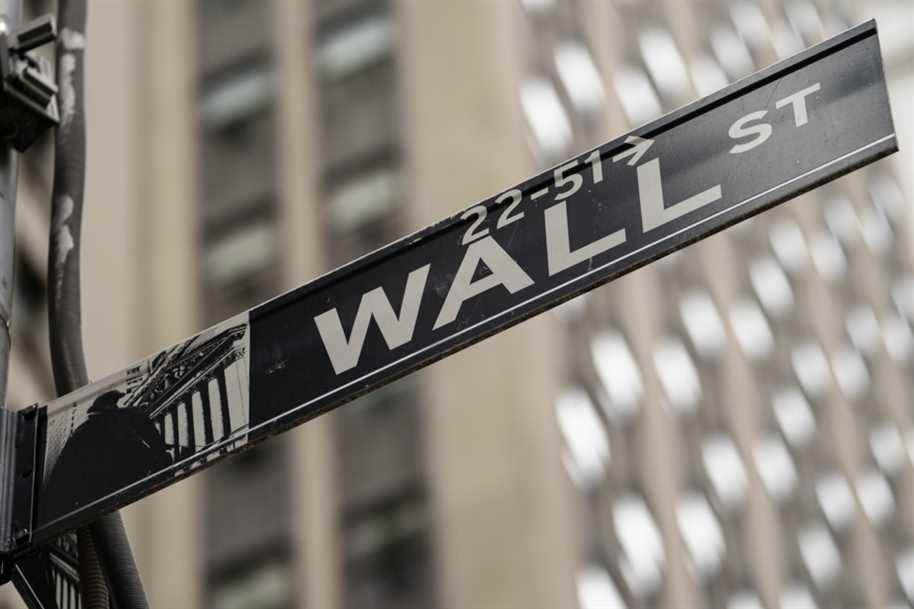(New York) The New York Stock Exchange ended in scattered order on Friday, struggling to maintain the momentum that has carried it for two weeks and misguided by poor macroeconomic indicators.
Updated yesterday at 5:12 p.m.
The Dow Jones gained 0.44%, to end at 34,861.24 points, the NASDAQ index fell 0.16%, to 14,169.29 points, and the broader S&P 500 index gained 0.51. %, at 4543.06 points.
After oscillating between green and red throughout the day, the S&P 500 managed to end the week on a seventh increase in nine sessions. The Dow Jones, he signed his eighth increase in ten sessions.
“There was this rebound and we are back to levels where you would expect to find resistance,” commented Tom Martin, portfolio manager at Global Investments.
The S&P 500 notably touched a technical threshold this week which slowed its momentum.
Again in verve in recent days, after four difficult months, technology stocks failed on Friday to pull the indices a little further, in particular the NASDAQ, which hosts many of them.
The graphics card manufacturer Nvidia (-1.63%) or the semiconductor specialist AMD (-0.71%) have thus made ground after having advanced for two weeks.
“Before January, we didn’t care about valuation levels,” argues Tom Martin. Despite the recent rebound, “this is no longer the case. There will be caution. »
On Friday, Dow Jones and S&P 500 found a second wind in so-called defensive stocks (less sensitive to economic conditions), such as Honeywell (+1.59%), Merck (+1.16%), or Procter & Gamble ( +1.16%).
Moreover, the indices were handicapped by some poor macroeconomic indicators.
The index measuring the confidence of American consumers thus fell in March to its lowest level since October 2011, that is to say more than ten years.
The University of Michigan survey found that consumers were particularly concerned about inflation and falling real (price-adjusted) incomes.
Another disappointing figure is that of home sales, which fell 4.1% while economists were expecting a 1% increase.
The data contrasts with the new jobless claims published Thursday, at their lowest in more than 52 years, and the PMI activity index at its highest in eight months.
“The indicators are mixed,” summarizes Tom Martin. “Within two to three weeks, we will start to see publications from companies [pour le premier trimestre] which will offer us a window on this new world, after the invasion of Ukraine. »
While equities seem to have digested the continued firming by the US Central Bank (Fed) well this week, the bond market still has stomach aches.
On Friday, the yield on the US 10 treasury bond crossed 2.50% for the first time in 34 months, before falling back slightly to 2.49%.
On the side, after the announcement of measures to reduce Europe’s dependence on Russian gas, including the supply of natural gas by the United States, the American gas giants were celebrating.
Cheniere (+5.46%), EQT (+11.68%) or Cabot (+1.34%) have all been sought.
Also popular, the American fertilizer giant Mosaic (+4.04% to 71.34 dollars), which took advantage of tensions in this market linked to uncertainties about Russian exports.
The tech giants reacted little to the announcement of an agreement on a new European regulatory framework to prevent abuse of a dominant position.
The so-called DMA regulation aims to force “Gafam” and other digital platforms to open their services to competition,
Meta (ex-Facebook, +1.02%), Amazon (+0.62%), Apple (+0.37%) or Alphabet (+0.15%) all ended up.
Banking stocks took the same lift as rates, with the prospect of improving their credit margins, like JPMorgan Chase (+0.87%), Bank of America (+1.53%) or Wells Fargo (+2.40%).
Further gains in the energy sector fueled the Toronto Stock Exchange’s flagship index, which in turn recorded a fifth consecutive weekly gain, while the Canadian dollar nearly hit the 80 cent US mark for the first times since January.
The Toronto floor’s S&P/TSX Composite Index gained 68.05 points on Friday to end the session with 22,005.94 points.
In the currency market, the Canadian dollar traded at an average rate of 79.99 US cents, up from 79.71 US cents the day before.
On the New York Commodity Exchange, crude oil rose US$1.56 to US$113.90 a barrel, while natural gas rose 16.5 cents US to 5 US$.61 per million BTUs.
The price of gold returned US$8.00 to US$1954.20 an ounce and that of copper fell US$4.4 cents to US$4.70 a pound.
With The Canadian Press
